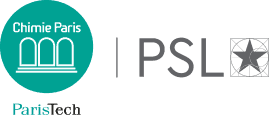
Operando modeling of realistic functional nanoporous materials for sustainable chemistry, nanosensing and clean energy
Veronique Van Speybroeck, Center for Molecular Modeling, Ghent University, Technologiepark 46, 9052 Zwijnaarde, Belgium
Where : ENS, Amphithéâtre Jaurès
Nanoporous materials having pores with dimensions less than 100 nm, are omnipresent in many application fields such as catalysis, separation, energy storage, etc. The ultimate dream would be to design materials to specific needs such as having the desired surface area, nanoconfinement, etc. This is a very ambitious goal both for theoreticians and experimentalists, as one is confronted with an inherent problem of attainable length and time scales. From experimental characterization point of view, one tries to push the limits of spatial and temporal resolution to systematically smaller scales, whereas modeling typically adopts a bottom-up approach, starting from atomistic information and trying to bridge to experimental scales. So far, theoretically attainable length scales within the field of nanostructured materials are limited to a few tens of nanometers and common molecular dynamics (MD) runs extend well into the nanosecond range, depending on the level of theory used to calculate the forces between the atoms.
Furthermore, the functional response of materials is largely affected by the conditions in which they do the work. Therefore, it is essential to account in a modeling approach for so called operando conditions taking into account realistic temperatures, pressures, presence of moisture, etc. Operando modeling can certainly not be achieved with one single technique. Instead a range of models based on molecular dynamics (MD) methods, microkinetic models, and machine learning algorithms are currently explored.
Within this talk, I will illustrate how the rich toolbox of modeling techniques can help to understand the function of nanoporous materials under operating conditions. Various modeling concepts will be illustrated by means of examples relevant for the fields of sustainable chemistry, clean energy and nanosensing. Materials and applications encompass zeolites to convert non-fossil based feedstocks like biomass, C1 molecules to useful building blocks for the chemical industry; stimuli-responsive metal-organic frameworks that respond upon multiple triggers (mechanical, gas adsorption, electric fields); metal halide perovskites with an optical function to efficiently utilize solar energy for chemical conversions or energy harvesting.
It will become clear how modeling in close synergy with experiment is quintessential in understanding the function of nanostructured materials. I will also show some of our recent endeavors to drastically extend the accessible length and time scales in molecular modeling and end with some challenges on how to model spatiotemporal behavior in nanoporous materials.
Veronique Van Speybroeck is full professor at the Ghent University and head of the Center for Molecular modeling (https://molmod.ugent.be/members/veronique-van-speybroeck) a multidisciplinary research center composed of about 40 researchers. She graduated as engineer in physics at the Ghent University in 1997 and obtained her Ph.D in 2001 on a subject dealing with theoretical simulations of chemical reactions with static and dynamical approaches.
Veronique Van Speybroeck has a record of significant contributions in the field of modeling nanoporous materials for catalysis, adsorption, e.g. zeolites, Metal-Organic Frameworks, Covalent Organic Frameworks; all applications are inspired and performed in close synergy with experimental groups. The research is driven by the ambition to model as close as possible realistic materials/processes. To this end, Van Speybroeck systematically pushed the limits of simulation methods. She is recipient of two ERC grants (ERC StG in 2010 and ERC CoG in 2015), which were strong drivers for new method developments in the field of nanoporous materials. With the ERC StG grant, new methods were developed to calculate accurate chemical kinetics for reactions taking place in nanoporous materials. With the ERC CoG grant, Van Speybroeck pioneered the simulation of complex catalytic conversions at operating conditions using enhanced molecular dynamics simulations capturing the full complexity of the free energy surface, as she became strongly convinced that simulations had to account for true operating conditions such as realistic temperatures, pressures, feeds. Currently, she is exploring methods to simulate materials with inclusion of spatial heterogeneities, as the behavior of realistic materials may strongly affected by crystal size, morphology, presence of defects.
The research group of Van Speybroeck is embedded within the Center for Molecular Modeling (CMM, http://molmod.ugent.be), which is a multidisciplinary research center grouping about 40 researchers with molecular modeling interests. Van Speybroeck was co-founder of the Center in 2000 and since 2012 she is leading the CMM. The research is performed with a multidisciplinary group of scientists, having backgrounds in physics, chemistry, (bio-)engineering, materials science. Van Speybroeck strongly believes in collaborations among researchers across disciplines and strongly stimulates such open vision as key to achieve scientific excellence. Van Speybroeck has served in many boards to evaluate research, is member of various editorial boards and international networks. She is also an elected member of the Royal (Flemish) Academy for Science and the Arts of Belgium (KVAB, www.kvab.be).
- This évènement has passed.
